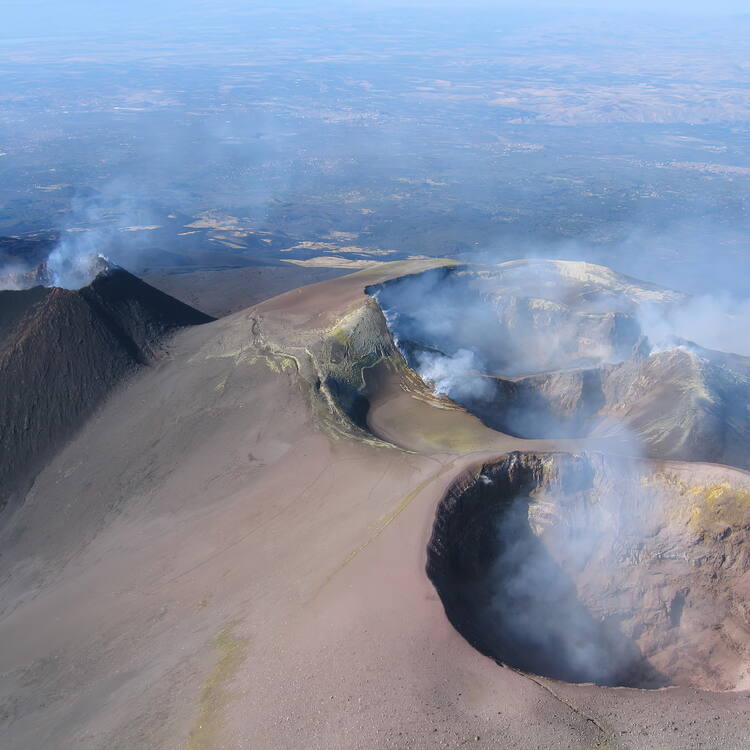Exploring Mount Etna: The Iconic Volcano That Shapes Sicily’s Landscape
Mount Etna, known as Mt. Etna, is not just a geological wonder but also a cultural treasure for the people of Sicily. It is Europe’s tallest and most active volcano, boasting a height of 3,329 meters (10,922 feet). This majestic natural monument has been recognized by UNESCO as a World Heritage site for its unique ecological and geological significance. If you’re curious about the beauty and features of Mt. Etna, this article will take you through its fascinating history, geological activity, and its impact on the local ecosystem and economy.
The Geological Significance of Mount Etna
Located on the east coast of Sicily, Mt. Etna is a stratovolcano that has been erupting for thousands of years. Its complex volcanic structure consists of several craters formed due to various eruptive events. The most remarkable aspect of Mt. Etna is its persistent activity, which makes it one of the most studied volcanoes in the world. Scientists monitor its eruptions closely to understand volcanic behavior better, and this knowledge helps in predicting future activities.
Mt. Etna’s eruptions can range from gentle lava flows to explosive events that send ash clouds high into the atmosphere. Its last major eruption occurred in 2021, showcasing the volcano’s unpredictable nature and the need for ongoing research and monitoring.
Mount Etna’s Impact on Local Culture and Economy
The presence of Mt. Etna has profoundly influenced local culture, shaping the life and identity of the Sicilian people. The fertile volcanic soil surrounding the volcano provides excellent conditions for agriculture, making it famous for its wine production, particularly the Etna Rosso and Etna Bianco wines. The region has become known for its high-quality grapes, and the cultivation practices here blend tradition with modern techniques.
Tourism is another significant aspect of the economy around Mount Etna. Adventurers and nature enthusiasts flock to this region to explore hiking trails, ski slopes in winter, and breathtaking views. The growing popularity of eco-tourism and adventure sports has led to the development of guided tours and other services that cater to visitors.
Ecological Importance of Mt. Etna
Mount Etna is home to unique biodiversity, which is essential for maintaining ecological balance. The varying altitudes and climates create micro-environments that support specific plant and animal species. The lower slopes are rich in vineyards, citrus groves, and Mediterranean vegetation, while the higher elevations are characterized by alpine flora.
Additionally, the eruptions and the resulting lava flows create new habitats. As these areas slowly recover from volcanic activity, they become a laboratory for scientists studying ecological succession. Mount Etna is vital for research on climate change and biodiversity conservation.
Conservation Efforts and Challenges
Given its ecological and cultural importance, conservation efforts around Mt. Etna are crucial. Various organizations work to preserve the unique environments surrounding the volcano. However, challenges such as illegal land use, urban expansion, and tourism-related pressures threaten the delicate ecosystems.
The local government and organizations emphasizing sustainable tourism practices are integral to mitigating these threats. Education and community involvement are key components in these strategies, ensuring that both locals and tourists respect the environment and understand its value.
Visiting Mount Etna: What to Expect
If you plan to visit Mt. Etna, prepare for an unforgettable experience. There are multiple access points, and visitors can explore various hiking trails ranging from easy to challenging. The guided tours often include hiking to the summit craters, exploring lava caves, or taking a cable car to enjoy panoramic views.
For those interested in the scientific aspect, numerous visitor centers provide information about the volcano’s geology, history, and ongoing research. The stunning landscapes create an immersive experience that combines adventure and education.
Conclusion: The Enduring Power of Mount Etna
Mount Etna stands as a powerful symbol of nature’s beauty and unpredictability. Its influence extends beyond Sicily, serving as a subject for scientific research, tourism, and cultural identity. Understanding and appreciating Mt. Etna helps us respect the incredible natural processes that shape our world. As a UNESCO World Heritage site, it is a treasure that demands our attention and care, ensuring that future generations can witness its magnificence.






